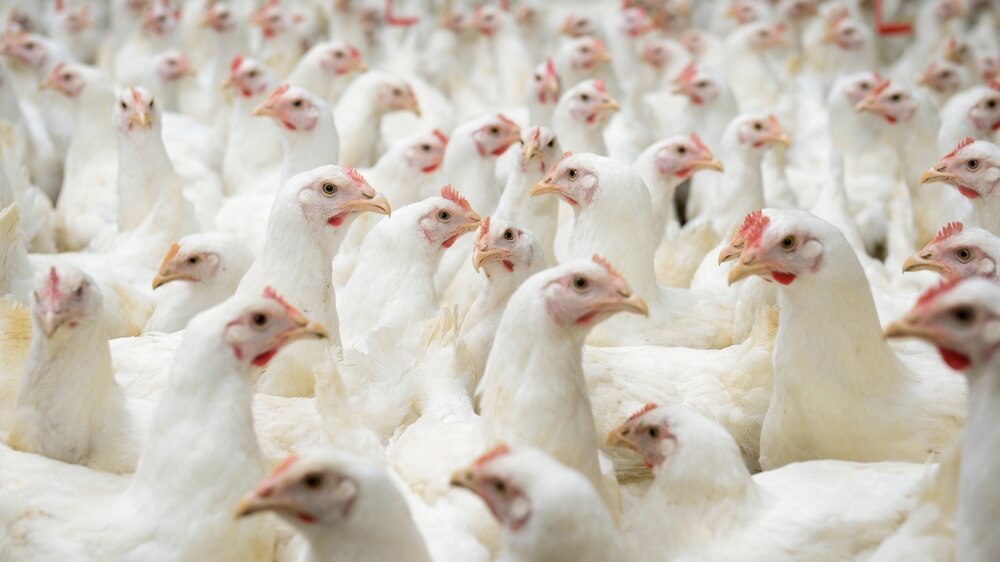The Truth About Animal By-Products in Dog Food

Article Updated 7/27/211
Animal by-products — what could be more controversial to dog food shoppers than animal by-products?
These common pet food ingredients are loathed by many. Yet they’re accepted… and even revered… by others.
Fans claim animal by-products are nutritionally no different than any other type of meat. And they blame the ingredients’ noted unpopularity on the unsavory mental image they invoke.
Something supporters like to refer to as “the yuck factor”.2
Critics, on the other hand, insist these ingredients are nothing more than inedible waste of inferior nutritional value.
What Are Animal By-Products?
Animal by-products are what’s left of a slaughtered animal after the skeletal muscle meat intended for human consumption has been removed.
Or according to the USDA3…
“Animal by-products include all parts of a live animal that are not part of the dressed carcass.”
These processing leftovers (known as offal) include those parts of an animal which have been “rejected for human use and can be expected to be processed into animal feed”.4
For example…
- Liver
- Lungs
- Heads
- Blood
- Brains
- Spleen
- Kidneys
- Stomachs
- Intestines
Giblets (livers, hearts, gizzards and necks) as well as other organs can still be sold as edible meats as they are… or used as ingredients to make hot dogs, bologna and sausage.
Unfit for Human Consumption… OK for Dog Food?
Animal by-products classified as “inedible” and “unfit for human consumption” can still be sold for use in pet food.5
Some inedible waste can be used to produce wet or dry pet food as it is, soon after slaughter…
While other rejected waste can be rendered into meat or poultry meal products.
In any case, keep in mind…
What makes some by-products fit for human consumption (and others not) isn’t always a matter of what they are…
But also, how they’re handled after slaughter.
For example…
By-products that are not refrigerated immediately after slaughter but stored for hours in a hot offal trailer cannot be sold for human consumption…
But they can still be legally used for making pet food.
Turning Inedible Waste into Pet Food
On the other hand…
Rejected waste such as dead farm and zoo animals that have been declared unfit for human consumption can first be rendered into meal ingredients…
And then be used to make pet food.
What Is Rendering?
Rendering is a process similar to making stew… except that the stew is intentionally over-cooked.
With rendering, the idea is to start with a stew of by-products and cook away the water.
Then, skim away the fat and bake the residue.
What you end up with is a concentrated protein powder known as by-product meal.
Feed-Grade vs Pet-Food-Grade
In the specific cases of chicken and poultry, there are 2 grades of by-product meals…
- Feed grade by-product meal
- Pet food grade by-product meal
In an important 2003 study6, pet food grade by-product meal was compared to feed grade by-product meal.
The result?
Pet food grade by-product meal was found to be…
Bottom line?
All things considered, pet food grade by-product meals are superior to feed grade by-product meals.
Unfortunately, without contacting the manufacturer, there’s no way to know which type of by-product meal is in any dog food.
The 2 Ways to Describe Animal By-Product Meals
Based upon the source of their raw materials, there are two ways to identify by-product meals.
- Named by-product meals
- Generic (anonymous) by-product meals
Named by-product meals have one thing in common. They all clearly identify the source species of the by-products that was used to make the meal.
So, on a pet food label…
You’ll find named by-product ingredients like…
- Chicken by-product meal
- Turkey by-product meal
- Poultry by-product meal
- Beef by-product meal
And although named by-product meals may not be considered the highest quality ingredients, they can be considered acceptable.
The One Type of Animal By-Product You Must Avoid
On the other hand…
Generic by-product meals are different. They do not identify the source of the meat.
Instead, they use vague and non-specific names like…
- Meat meal
- Meat and bone meal
- Meat by-product meal
- Animal by-product meal
What’s more…
Generic meat meals can also contain…
- Road kill
- Dead zoo animals
- Dead on arrival poultry
- Diseased and dying livestock
- Euthanized dogs and cats (unlikely today, but still possible)
Because you can never know the source of the meat used to make generic by-product meals, purchase of pet food products containing anonymous names should be avoided.
Nutritional Differences… Real or Imagined?
When comparing animal by-product meals with their “regular” meal counterparts, the differences can be nutritionally insignificant.
For example, in the case of rendered ingredients, the digestibility, biological value and amino acid content of both poultry and poultry by-product meals are nearly identical.10
So, if there’s little nutritional difference between the two, why then do some companies use meat by-products… while others don’t?
The Real Reason Dog Food Companies Use Animal By-Products
There’s one glaring and indisputable reason animal by-products remain so popular with some manufacturers… and not others.
Animal by-products are simply cheaper… notably cheaper than most any other comparable meat product. They’re used for making dog food because they save money. Not because they’re more nutritious.
Why is this important to a pet food shopper?
Although finding animal by-products in a recipe doesn’t guarantee you’ve discovered a good or a bad dog food, their presence must always be considered a reliable clue the food is made with cheaper ingredients.
The Bottom Line
With the sole exception of precisely identified organ meats, two rules will help you navigate the confusing world of meat-based dog food ingredients.
- Never pay top dollar for any dog food that lists animal by-products near the top of its ingredients list.
- Never buy any dog food containing generic animal by-products sourced from materials a manufacturer fails to clearly identify.



